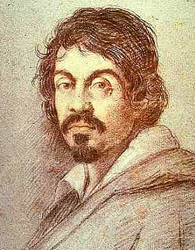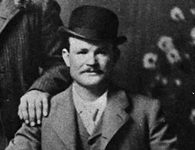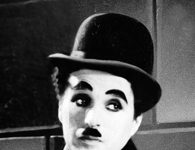Michelangelo Merisi, popularly known as Caravaggio, spearheaded the Baroque movement, and his paintings are acclaimed for their realism and their depiction of the violent, darker side of humanity. The 16th-century painter once said, “All works, no matter what or by whom painted, are nothing but bagatelles and childish trifles … unless they are made and painted from life.”
Caravaggio’s Early Days
Although historians cannot entirely confirm Michelangelo Merisi’s exact birth date, he is believed to have been born on September 28, 1571, in Caravaggio, Italy. Caravaggio was orphaned at the age of 11; he moved to Milan, where he was apprenticed to painter Simone Peterzano. With the painting skills he acquired in his four years under Peterzano, Caravaggio moved to Rome.
In Rome, Caravaggio saw the complex and unnatural-seeming Mannerist paintings that were popular at the time, and began to move in his own direction, toward a more natural, realistic approach to painting. Caravaggio’s early years in Rome found him living on the brink of poverty, bouncing from one job to another and putting his already violent temperament to the test.
Sources in this Story
- Biography.com: Caravaggio Biography (1571-1610)
- Artcyclopedia: Artists by Movement: Mannerism
- Time: Rome: 10 Things to Do: 2. San Luigi dei Francesi
- BBC News: Caravaggio death certificate ‘found’
- IMDb: Caravaggio
Caravaggio’s Notable Accomplishments
Caravaggio’s early years in Rome did produce several significant works, such as “Boy with a Basket of Fruit” (1593), where his uniquely natural style began to emerge, largely due to his use of real models. With the help of an art dealer, Caravaggio’s paintings were eventually brought to the attention of Cardinal Francesco del Monte, who gave Caravaggio his first real commission, to do paintings for the church of San Luigi dei Francesi. The three paintings depicted the life and violent death of St. Matthew in a realistic style that was so shocking the church ordered Caravaggio to repaint one of the paintings.
With his newfound fame, Caravaggio began a period of prosperity and productivity, receiving commissions for such famous works as “The Crucifixion of St. Peter” (1601), “The Deposition of Christ” (1602–04) and Death of the Virgin (1601–03). These works, and others like them, produced extreme reactions from the public.
Caravaggio’s controversy was not limited to his art; he was known to have a short temper and was arrested several times for violent crimes, including an incident in which he reportedly threw stones at a Roman guard. Caravaggio’s legal problems came to head in May of 1606, when he murdered a man in a fight over a tennis match and was forced to permanently flee Rome.
The next several years saw Caravaggio in perpetual flight across Italy. While many famous works were created during this time, his uncertain future and inner desperation loomed in his dark and often foreboding paintings. Travelling from Naples to Malta in 1608, Caravaggio was commissioned to paint “The Beheading of St. John the Baptist” for the Valletta Cathedral, but was soon forced to flee again, to Sicily and then Messina, after word of his previous crimes in Rome caught up with him. Even in flight, Caravaggio continued to produce important religious paintings, including “The Burial of St. Lucy” (1608) and “The Resurrection of Lazarus” (1609).
The Man and his Work
The Rest of the Story
Caravaggio finally decided to seek the Pope’s pardon for his crimes and tried to make his way to Rome; he was arrested en route and released shortly after, only to die of illness on July 18, 1610, without ever reaching the city. His influence planted the seed of a new kind of naturalism in painting that has carried over into the modern era.
Derek Jarman wrote and directed the 1986 film “Caravaggio” about the painter’s life.
This article was originally written by Caleb March; it was updated September 26, 2017.











